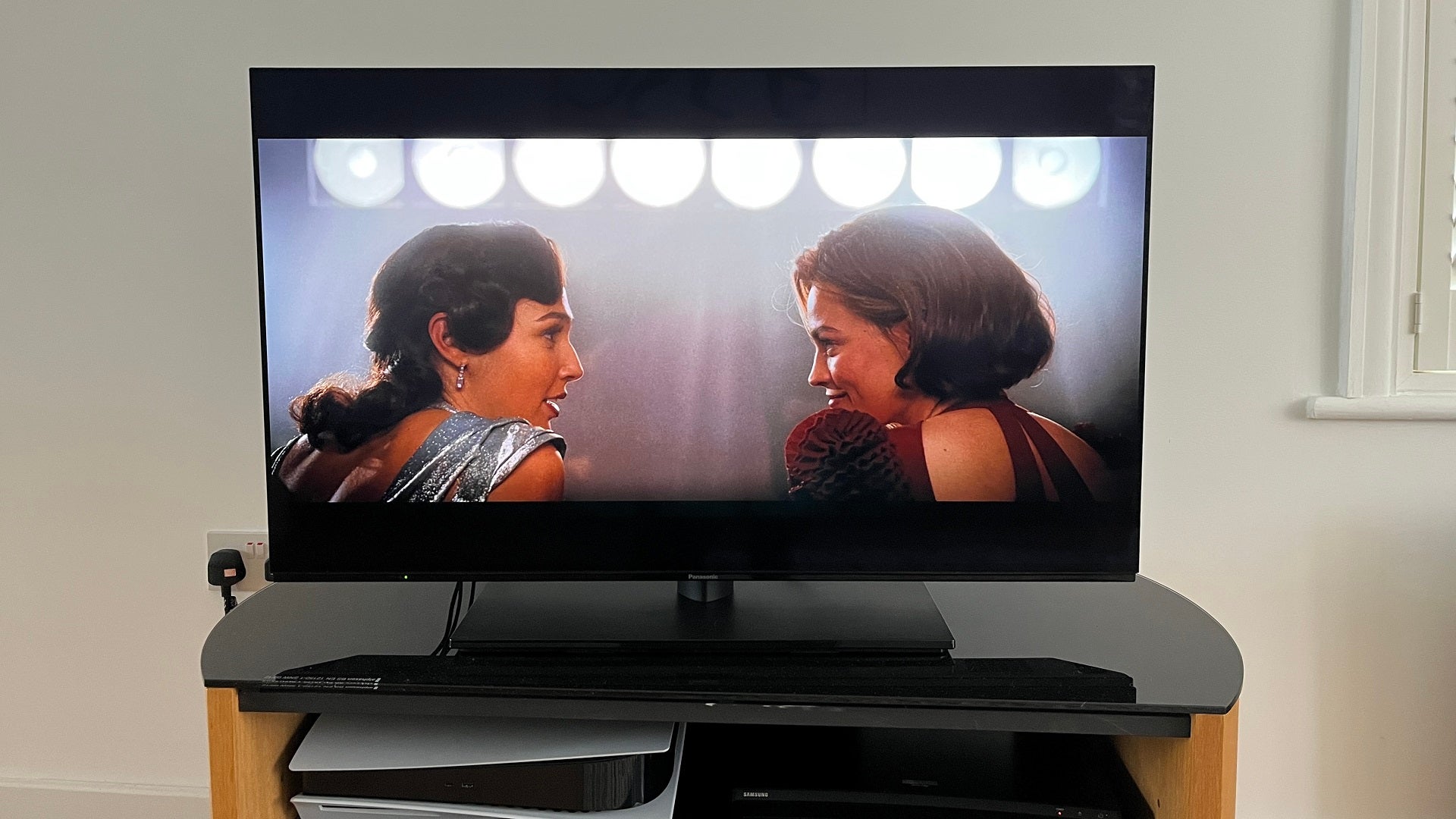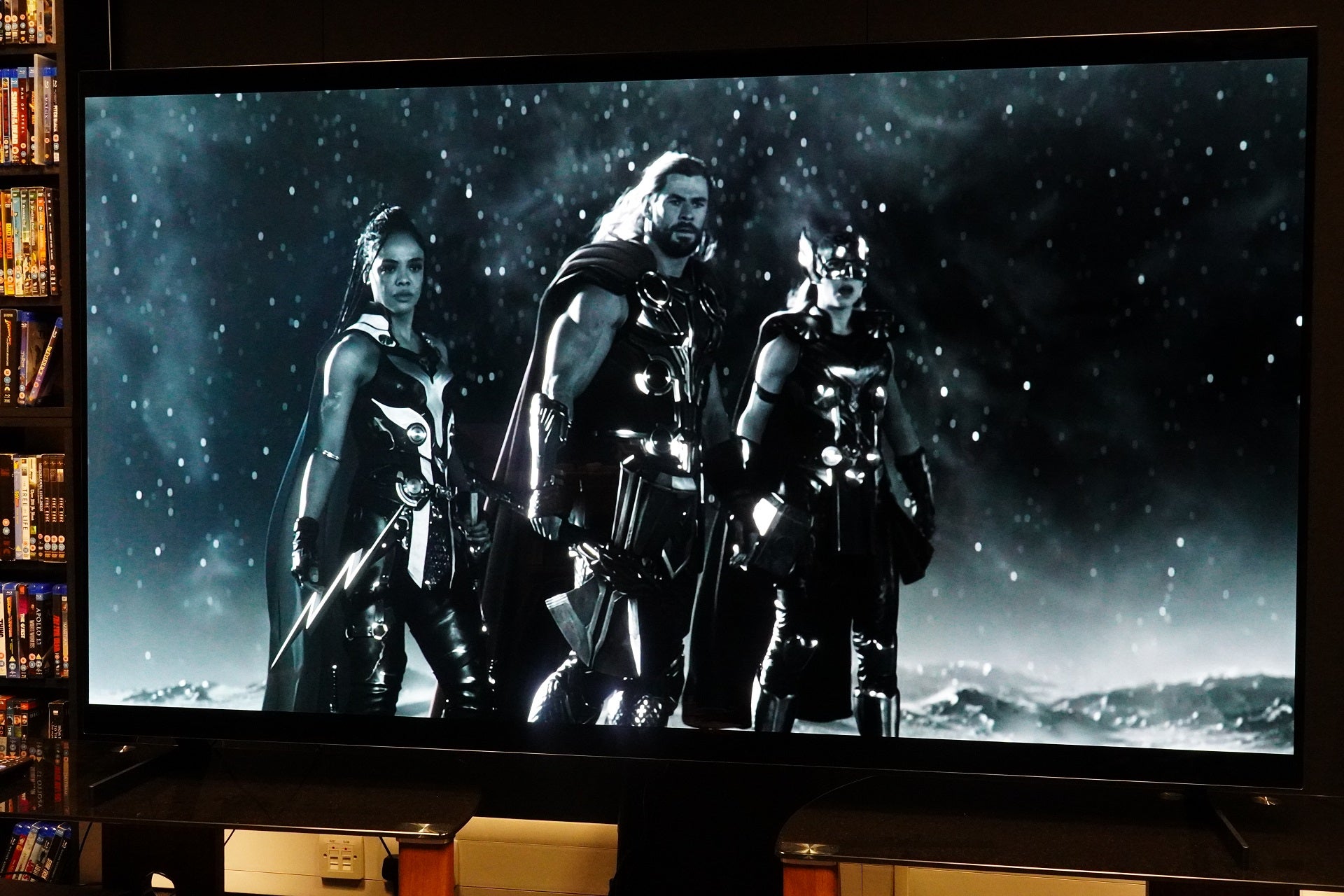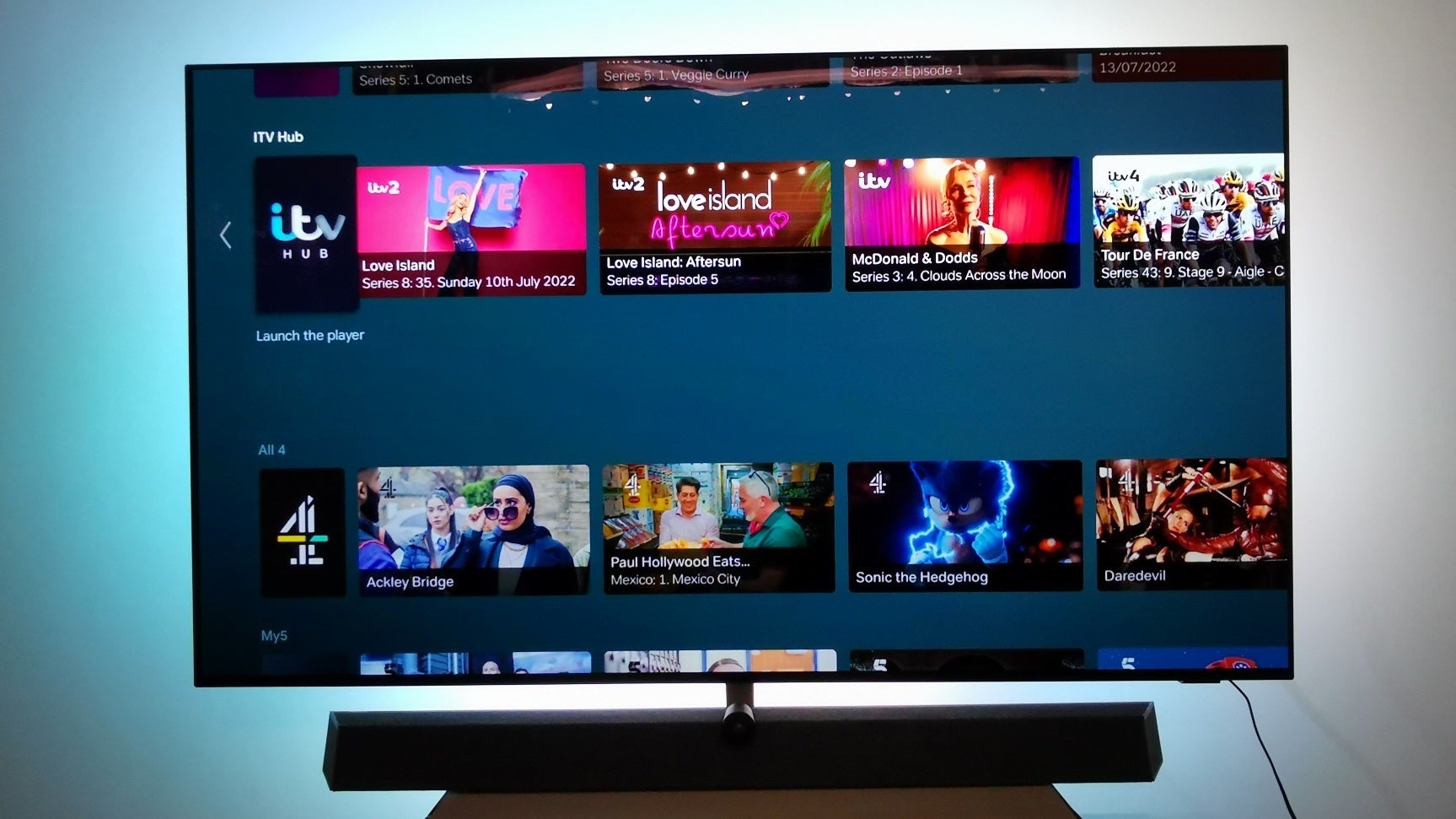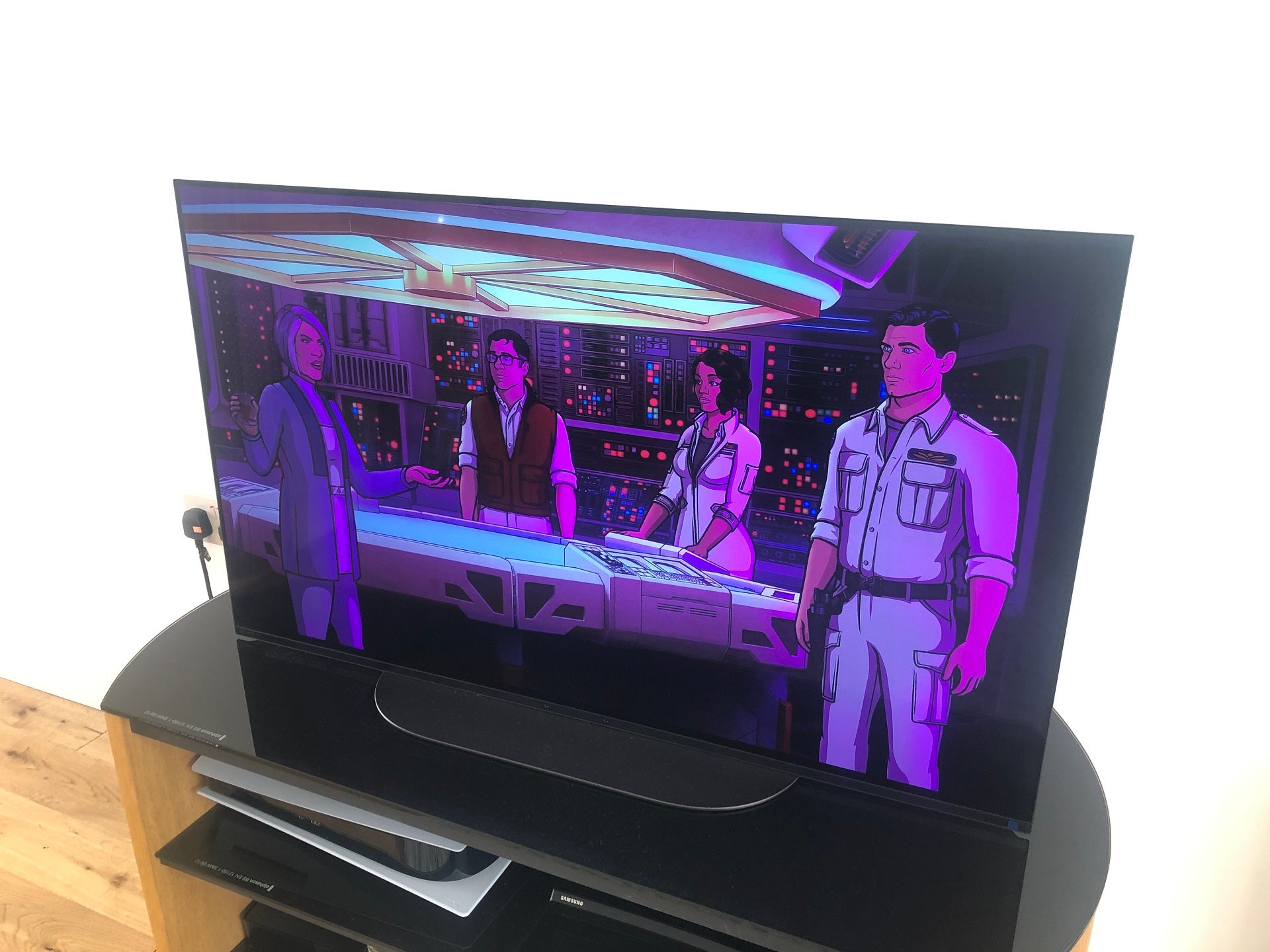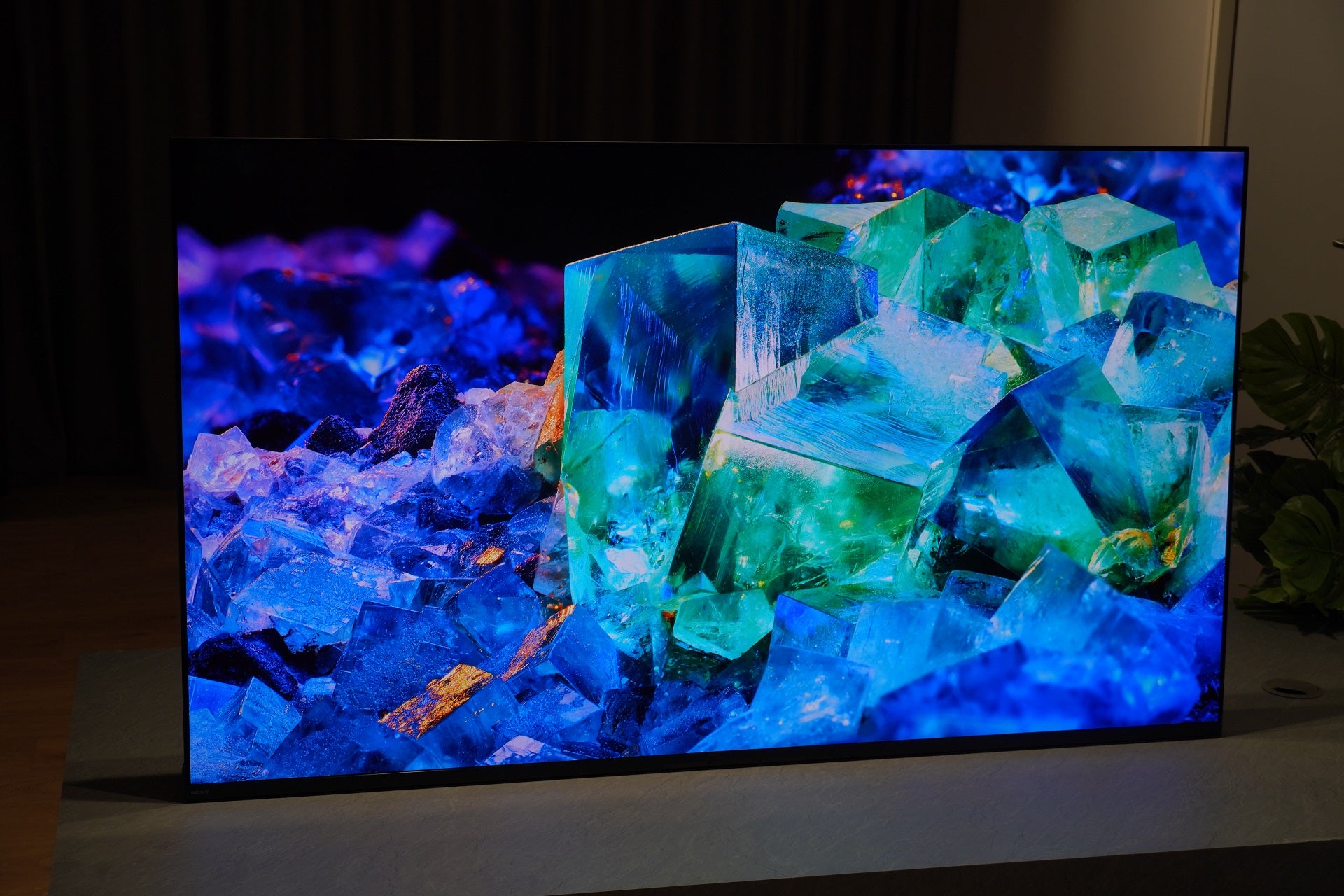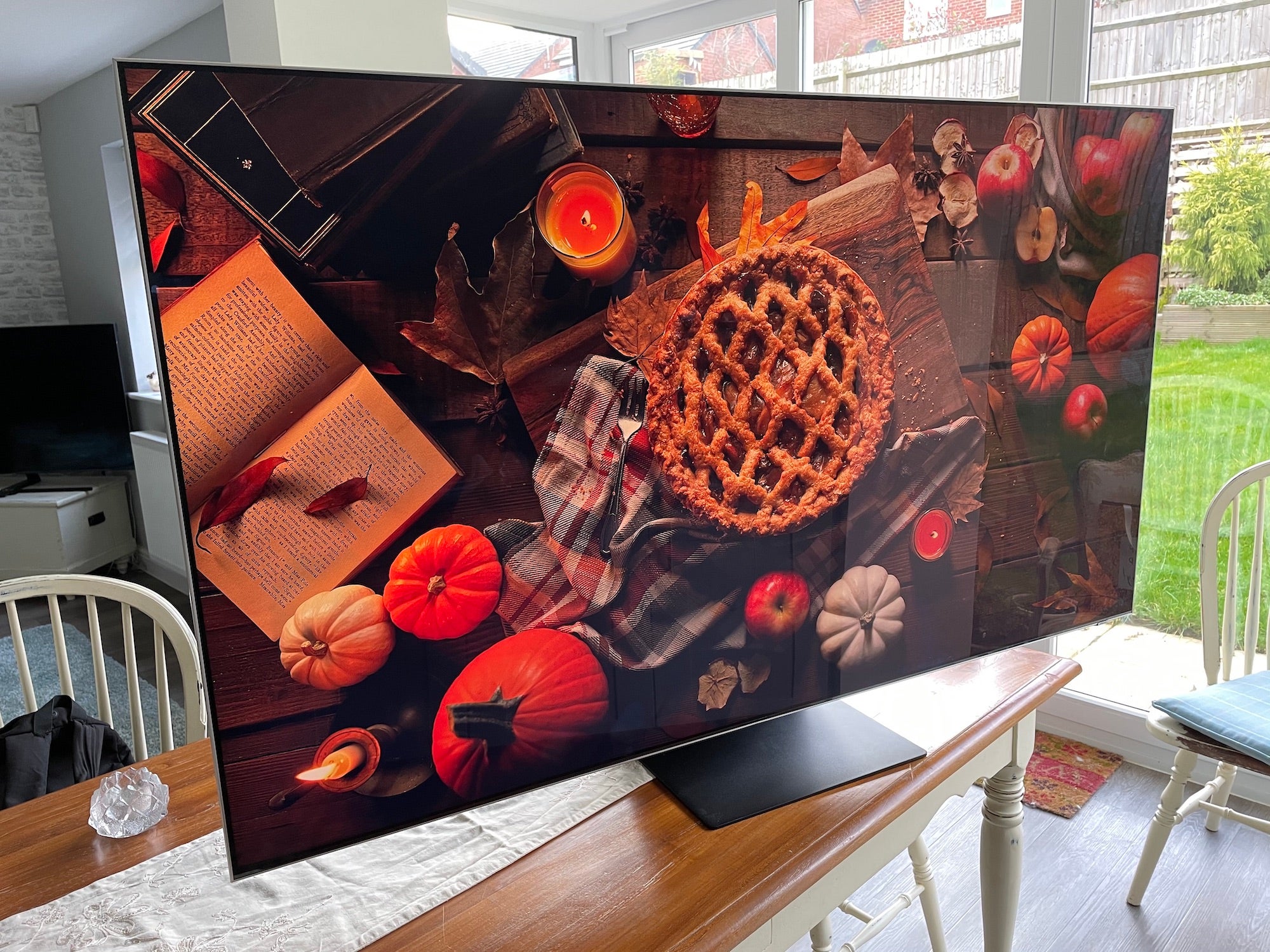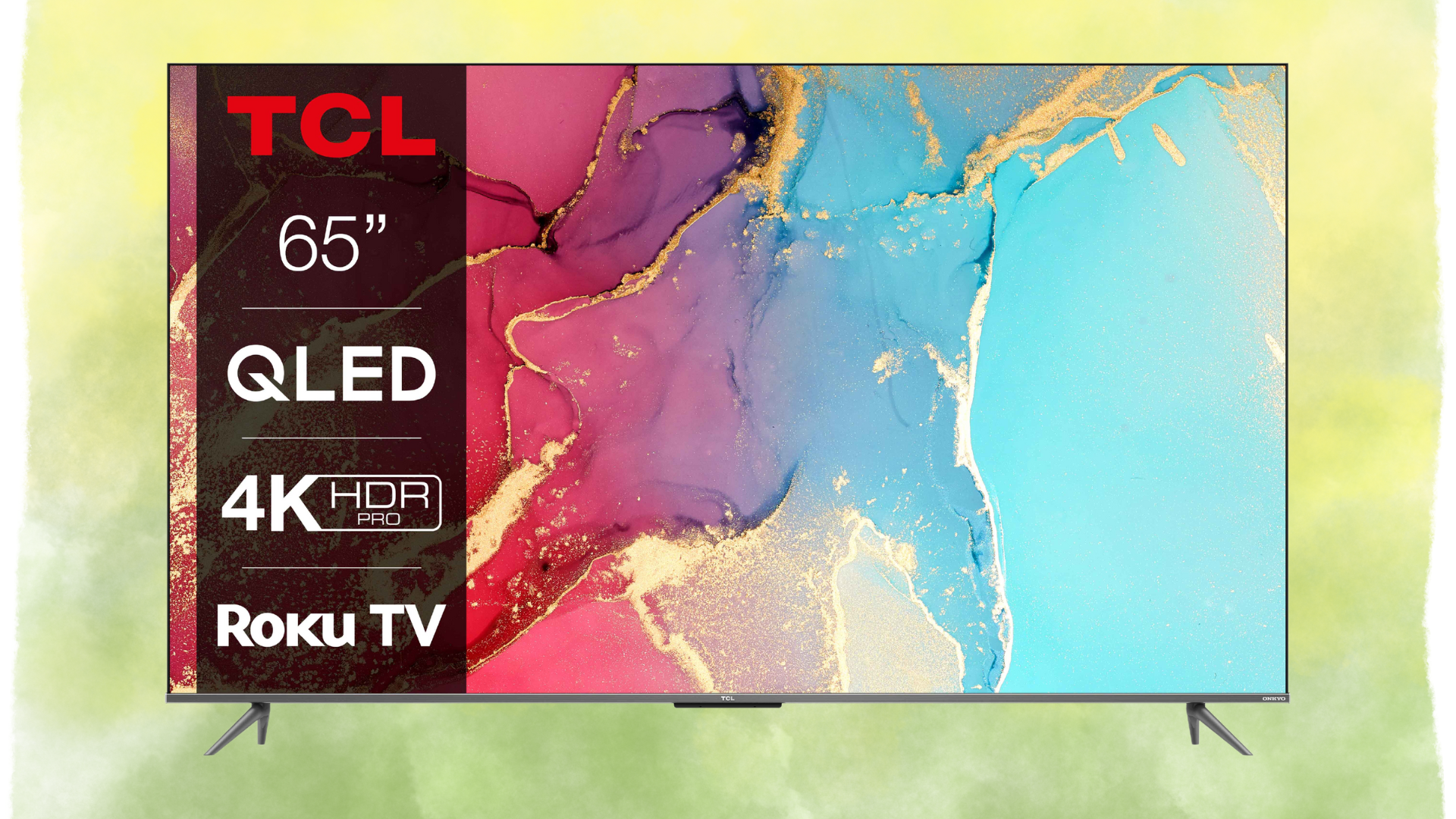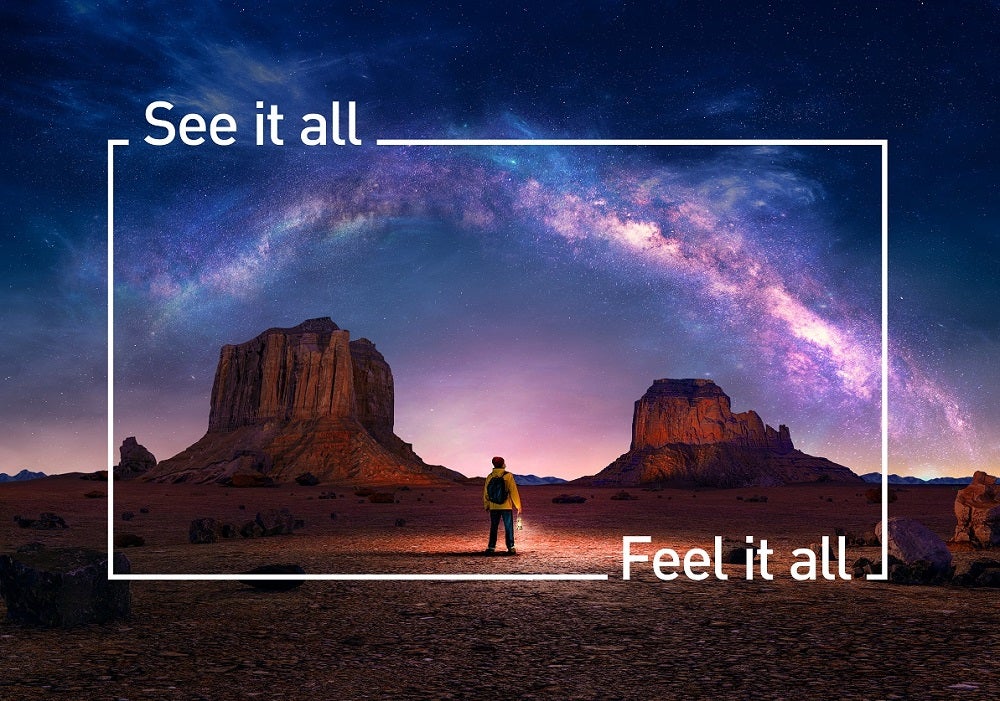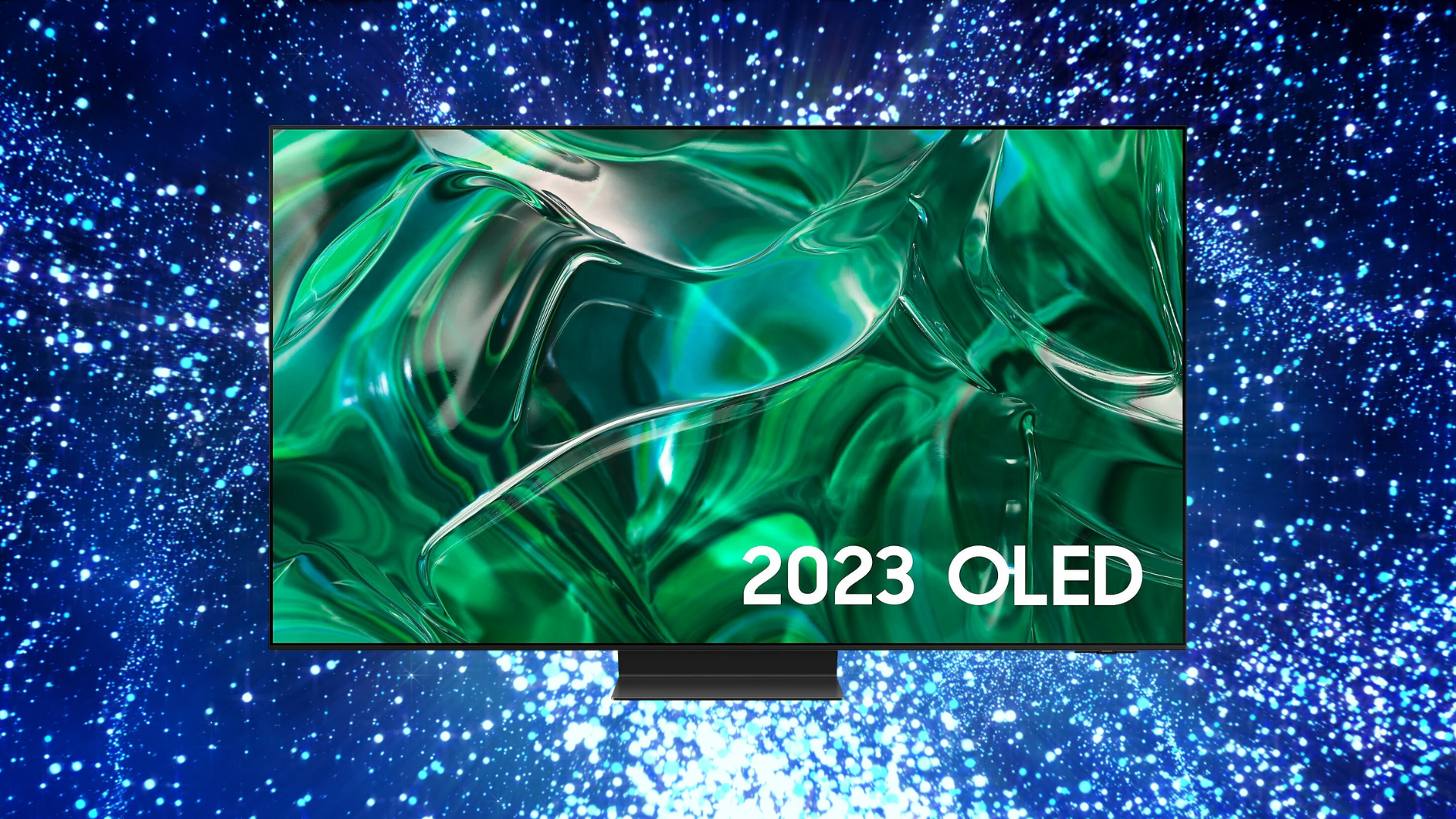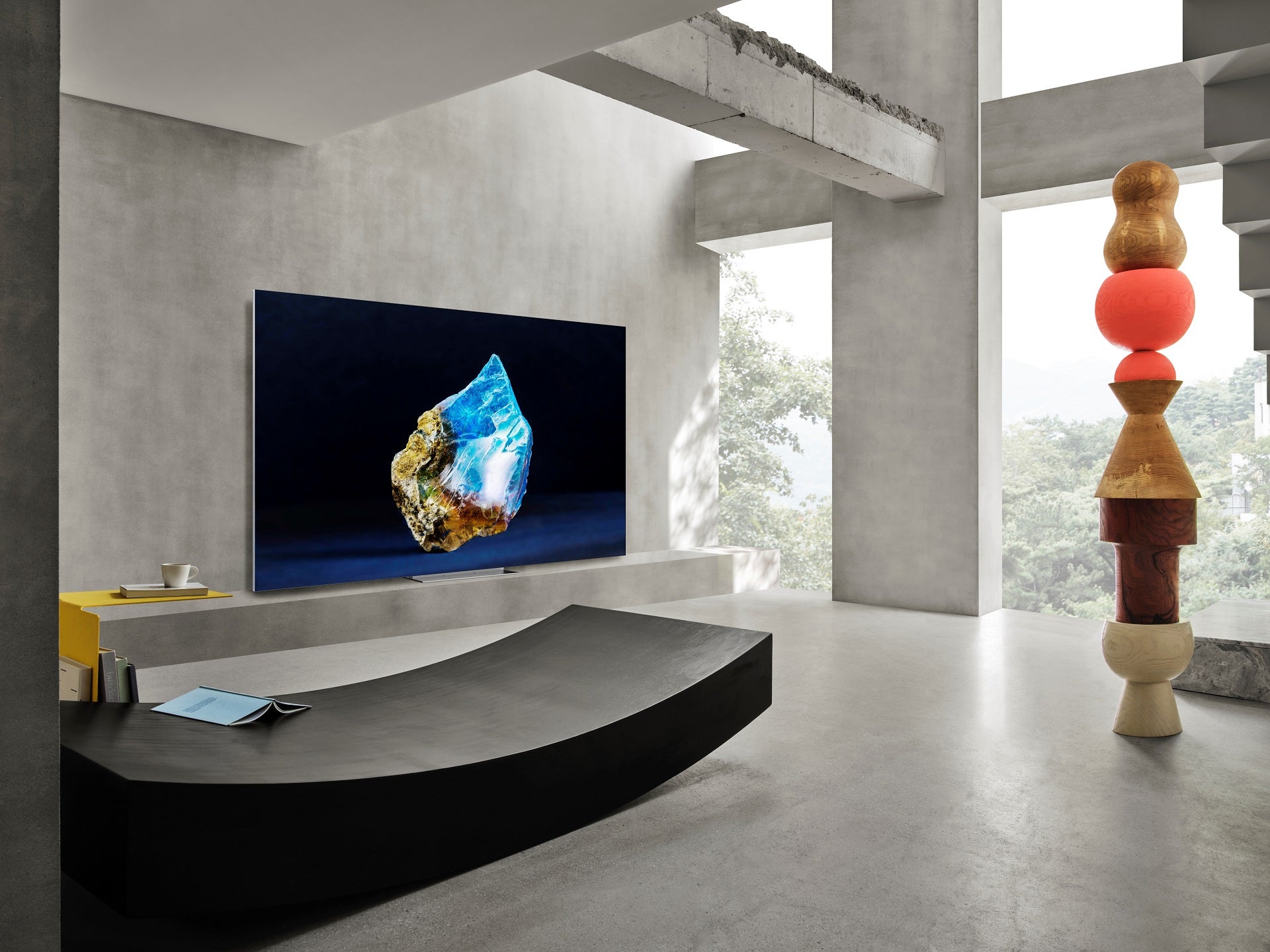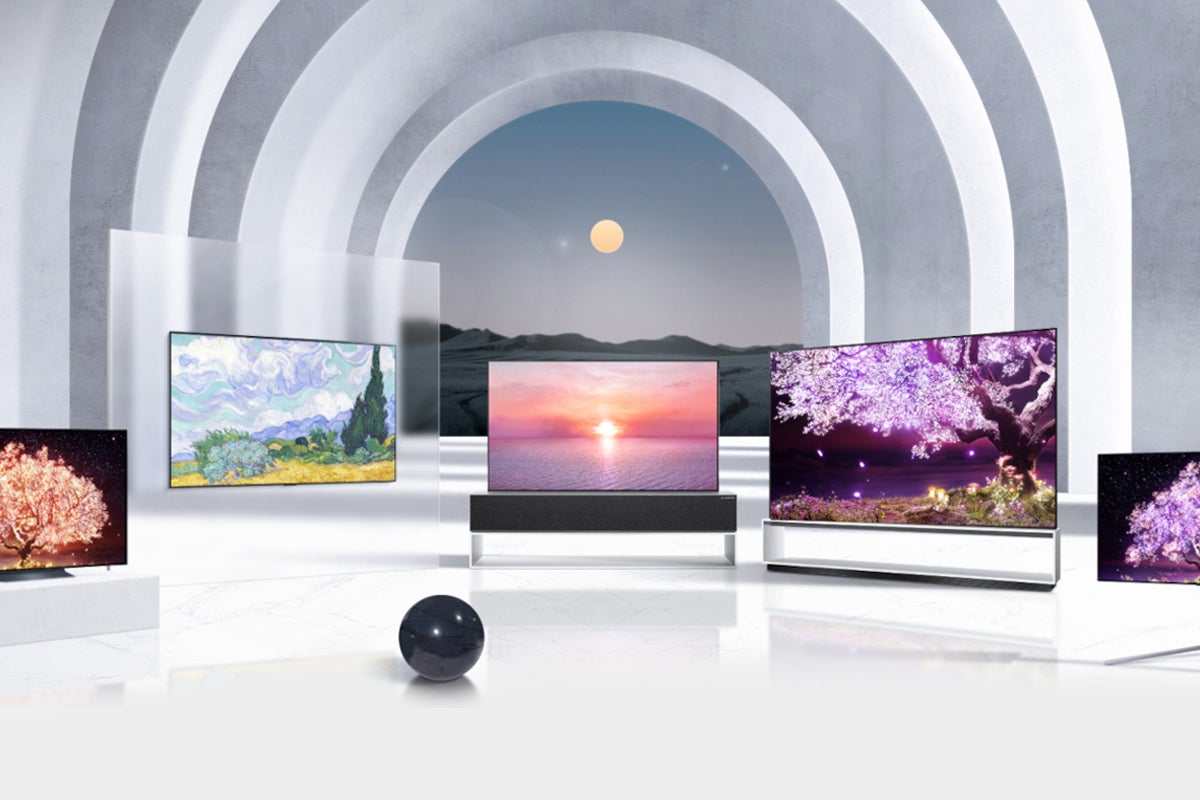Best TV 2024: The best affordable and premium sets
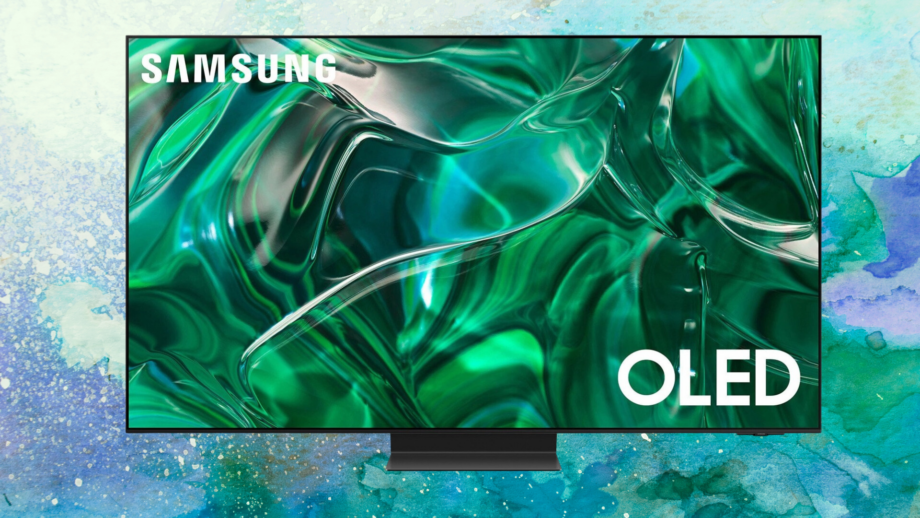
If you’re after the best TV, you’ve come to the right place. We’ve tested TVs all year long and these are of the best models of 2024.
When we review TVs, we assess them in dedicated testing facilities as well as testing them in our homes. We carry out tests that measure brightness, colour accuracy and input lag, evaluating their picture and audio performance, and assessing their smart and gaming features to build a picture of a TV’s strengths and weaknesses.
We’re always comparing new models against existing ones to determine which screen offers the best value. The list you see before you represents plenty of hours that have gone into testing these TVs, and the following models are the ones we rate as the best performers in their respective categories.
If you can’t find what you’re looking for on this list, we do have other lists to help in your search for a new TV. There is our best cheap TVs for affordable options, our best 4K sets if you’re looking for great HDR performance.
If you want the cutting edge of TV technology, consider our best 8K TVs. For those who want cinema-like picture quality then check out our best OLED TVs.
Best TV at a glance
- Best all-in-one TV: Panasonic TX-55MZ2000 – check price
- Best LG TV: LG OLED65G2 – check price
- Best gaming TV: LG OLED65C2 – check price
- Best Mini LED TV: Samsung QE65QN95C – check price
- Best 42-inch OLED TV: LG OLED42C2 – check price
- Best 48-inch OLED TV: Philips 48OLED807 – check price
- Best budget smart TV: TCL 55RC630K – check price
- Best QD-OLED: Samsung S95C OLED – check price
- Best 8K TV: Samsung QN900C – check price
- Best Ambilight TV: Philips 55OLED907 – check price
- Best affordable Mini LED TV: TCL C845K – check price
How we test
Every TV we review is put through the same set of tests to gauge its picture performance, usability, and smart features.
Tests are carried out over several days and are done by eye but supported with technical measurements. Testing by eye involves an expert watching a wide range of material to understand and determine a TV’s performance in fields such as brightness, contrast, motion processing, colour handling and screen uniformity.
We’ll consider the design of the TV in terms of build quality, study the spec sheets and see if the TV’s connections are up to spec, as well as playing video and audio content to ensure that the set handles playback as it claims. We also take note whether a product’s compatible formats and features are in line with industry trends or not to gauge whether it’s relevant for you.
Comparison to other related and similarly priced products is also important, to see if it’s missing any vital features and whether it impresses as a whole. After all this, we’ll come to a judgement on how the TV performs as a whole.
If you want to learn more, please visit our detailed page about how we test televisions.
 Best gaming TV
Best gaming TV
- Great 4K HDR performance
- Improved design
- Comprehensive gaming features
- Better motion skills
- More expensive than C1 initially was
- So-so Atmos sound
 Best LG TV
Best LG TV
- Excellent HDR performance
- Improved motion skills
- Accommodating gaming features
- Slim design
- Wide selection of streaming apps
- Higher starting price than G1
- Average audio
- Stand is optional extra
 Best small TV
Best small TV
- Natural-looking SDR and HDR images
- Excellent for gaming
- Small size
- Wide selection of apps
- Currently cheaper than other 42-inch OLEDs
- Rivals arguably offer upgraded picture quality
- Doesn’t comfortably accommodate a soundbar
 Best 48-inch OLED TV
Best 48-inch OLED TV
- Sharp, detailed and colourful image
- Better-than-expected sound
- Competitive gaming features
- Stylish design
- Ambilight, of course
- Not as bright as expected
- LG OLED better overall for gaming
- Remote can be frustrating
 Best Mini LED TV
Best Mini LED TV
- Stunningly bright, colourful pictures
- Groundbreaking LCD black levels
- Excellent gaming support and connectivity
- No Dolby Vision support
- A few backlight niggles
 Best 8K TV
Best 8K TV
- Spectacularly bright, colourful pictures
- Gorgeous ‘Infinity’ design
- Outstanding LCD light control
- It’s expensive
- No Dolby Vision support
- But still some minor backlight issues
 Best QD-OLED
Best QD-OLED
- Stunning, ground-breaking picture quality
- Gorgeous Infinity One design
- Outstanding gaming support
- No Dolby Vision
- Expensive even by OLED standards
- Smart interface can be unhelpful
 Best budget TV
Best budget TV
- Quick to assemble
- Excellent smart interface
- Quick input lag for gaming
- Impactful sound system
- Multi-HDR support
- Limited brightness with HDR
- HDR10+ performance doesn’t have the greatest impact
 Best Ambilight TV
Best Ambilight TV
- Three-sided Ambilight
- 4K 120HZ support
- Stylish design
- Only two inputs support 120Hz
- Stereophonic sound system
- Excellent HDR performance
- Dolby Vision IQ HDR support
- 360° Soundscape Pro Dolby Atmos system
- Game Board UI
- Only two HDMIs support 4K 120Hz
- Price
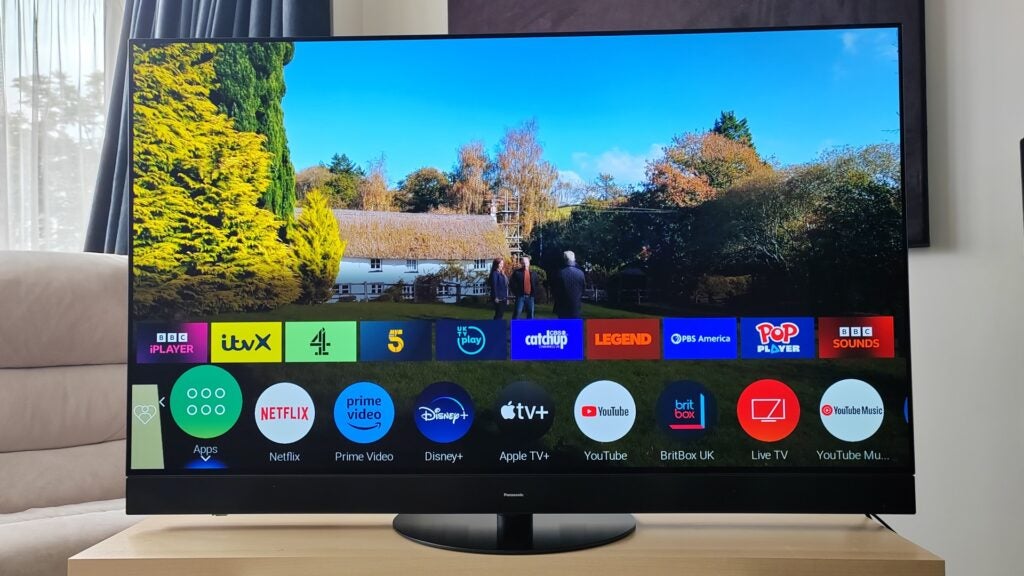
Panasonic TX-55MZ2000
Best all-in-one TV
Pros
- Excellent HDR performance
- Dolby Vision IQ HDR support
- 360° Soundscape Pro Dolby Atmos system
- Game Board UI
Cons
- Only two HDMIs support 4K 120Hz
- Price
There’s a new TV sitting at the top of our best list but it’s still the same brand. Our current top pick for 2024 is the Panasonic MZ2000.
The biggest difference to its predecessor, the LZ2000, is the MZ2000’s MLA OLED panel. Created by LG and further customised by Panasonic, our reviewer found it offered a huge hump in brightness with the Standard mode preset registering a big 1500 nits on a 5% window, and a mighty 1877 nits on a 10% patch in Dynamic mode. Alongside the LG G3 OLED, it’s one of the brightest OLEDs on the market.
We found that highlights burnt with intensity, images shine with punch and depth. Contrast is excellent, skin tones are naturally conveyed and reds and blues take on a rich, deep look. With support that covers all HDR formats: HDR10, HLG, Dolby Vision IQ and HDR10+ Adaptive, the picture performance makes the MZ2000 the jewel in Panasonic’s crown.
The MZ2000 is a good choice for brightly lit rooms as it has the brightness to dispel reflections or ambient light from causing distractions. The swivel design of the central design can also help evade annoying glare and reflections too.
My Home Screen remains easily accessible and customisable, with Freeview Play adding the UK catch-up apps along with big hitters in Netflix, Disney+, Apple TV+ and others. The Game mode has been updated with two modes to choose from in Game and True Game, the latter offers accurate colour performance much like Filmmaker mode does for film and TV.
We measured input lag at 14.5ms, which is not as good as the LG G3 OLED or Samsung S95C OLED but is brisk enough for competitive gaming. HDMI 2.1 technologies such as VRR, ALLM, 4K/120Hz, but they’re only available on two HDMI inputs.
We found sound quality was equally top notch with the side- and upfiring speakers conveying a large presence in a living room. It remains light on bass, however, failing to give bass-heavy scenes the emphasis they require. Nevertheless, this is one of the best-sounding TVs on the market.
Reviewer: Steve May
Full Review: Panasonic MZ2000

Samsung QE65S95C
Best QD-OLED
Pros
- Stunning, ground-breaking picture quality
- Gorgeous Infinity One design
- Outstanding gaming support
Cons
- No Dolby Vision
- Expensive even by OLED standards
- Smart interface can be unhelpful
With the entrance of QD-OLED viewers have more options to choose from than just ‘standard’ OLED TV screens. Samsung’s S95C is among the best we’ve tested from the latest screen technology.
While the first-gen QD-OLED model from Samsung was enjoyable, it didn’t fully live up to all the expectations we had. The S95C fulfils more of its potential on the picture quality front, its pictures are more refined; and with HDR content it delivers both small bright highlights and large scale brightness with much more confidence than the S95B could, our reviewer measured the S95C OLED hitting 1400 nits on a 10% window. That’s impressive for an OLED TV, though not as bright as either the Panasonic MZ2000 and LG G3 OLED.
Black levels are beautifully rich and deep, leading to excellent levels of contrast, and along with QD-OLED’s RGB panel configuration, colours are both fantastically vibrant and gorgeously subtle. Upscaling is fantastic with the processor’s ability to distinguish between source noise and genuine picture information, although we found the motion settings to be a mess, with too many unwanted motion artefacts.
Gaming-wise it’s the usual high quality service from Samsung’s premium TVs. We measured the input response of the game mode at 9.2ms, which is class-leading. All four of the HDMI 2.1 inputs are 4K 120Hz through its attached One Connect box and with PC gaming refresh rates can go as high as 144Hz.
The Tizen interface is still one we found could use more work. It still feels sluggish compared to older versions and its not always easy to navigate through its menus, but its voice recognition is excellent and can bypass issues caused by trekking through the interface.
The sound system is an improvement on the S95B, the TV offers a reasonable broad dynamic range without typically sounding congested or distorted. The smaller speakers used across the screen help to position effects in the right place much better with the OTS+ sound system. It also works nicely with Dolby Atmos, creating a big sound that pushes beyond the TV’s frame.
Reviewer: John Archer
Full Review: Samsung S95C OLED

LG OLED65G2
Best LG OLED TV
Pros
- Excellent HDR performance
- Improved motion skills
- Accommodating gaming features
- Slim design
- Wide selection of streaming apps
Cons
- Higher starting price than G1
- Average audio
- Stand is optional extra
When we reviewed the G1, we called it the best LG OLED TV we’ve tested, but that now shifts to the G2 OLED. It’s the same Gallery design with its uniformly flat rear panel for wall-mounting as before, but features extra improvements to the OLED EX panel with its OLED Evo processing reaping an even brighter performance.
We measured the HDR performance on a 10% window to be just over 1000 nits. That’s better than the C2 though not as bright as the Samsung S95B or newer S95C. Nevertheless, the extra brightness results in brighter, more intense highlights for greater contrast and depth in the image.
Detail levels are high, with images fed a good deal of sharpness and colours rendered in a lush manner, especially with Dolby Vision IQ. Upscaling of less than 4K resolution is strong and motion has been improved. Not as good as the still available Sony’s A95K or Panasonic LZ2000, but much smoother and less distracting than previous LG TVs.
For gaming the G2 supports HDMI 2.1 across all the HDMI inputs, with ALLM, VRR and 4K/120Hz available, making it easier to plug your sources in without having to pick and choose the input. LG has also beefed up its clouding options with Nvidia GeForce NOW.
We measured input lag at 12.9ms – slightly better than the new Panasonic MZ2000 though it doesn’t beat Samsung’s OLEDs. With VRR that figure can be reduced further for a more fluid gameplay performance.
The sound remains the weakest aspect of the G2’s performance, sounding restrained in its Dolby Atmos mode and lacking the impact the Sony A95K delivers. We found it sounded better with non-Atmos soundtracks offering more detail and dynamism.
There is of course the LG G3, which offers the brightest performance we’ve seen from an LG OLED yet. However, it hasn’t improved in terms of its audio performance and to our eyes there’s a slight green tinge to the picture quality that we can’t help but notice. The sound quality isn’t an improvement either, so though we feel the G3 is a better TV for picture, we’d recommend waiting for the price to go down if you’re going to purchase it and throw a soundbar into the mix as well.
Reviewer: Kob Monney
Full Review: LG OLED65G2

Samsung QE75QN900C
Best 8K TV
Pros
- Spectacularly bright, colourful pictures
- Gorgeous ‘Infinity’ design
- Outstanding LCD light control
Cons
- It’s expensive
- No Dolby Vision support
- But still some minor backlight issues
Samsung’s QN900C is another spectacular 8K TV from the Korean brand. There’s still a dearth of native 8K content to enjoy, especially given the price premium over 4K TVs.
Samsung tries to get around the lack of 8K content by claiming the QN900C will make 4K and lesser quality video content better through upscaling. Our reviewer found that claim to be true, with pictures enjoying more density, smoother edges, and a better sense of three dimensionality. It’s a stunningly impressive performance given how much information the QN900C is having to guess.
We measured peak brightness at over 2000 nits, and that level of luminance helps to deliver rich and vibrant HDR images. Another advantage of its 8K resolution is that the QN900C produces images that are sharper and denser than 4K TVs, as well a terrific sense of contrast with black levels that are almost OLED-like in their performance. We did find there were still backlight issues with bright objects against dark backgrounds, but the QN900C achieves the best performance so far from Samsung’s 8K TVs to minimise blooming.
The lack of Dolby Vision is again disappointing, although our reviewer found that with HDR10 content, the Samsung’s tone mapping performance was good enough to produce accurate levels of brightness or reproduction of colours.
Moving onto the sound system, it’s better than the usual flatscreen TV. It offers good clarity and thanks to Samsung’s OTS Pro audio system helps position dialogue in the right place on the screen. We would have liked more bass, and the soundstage isn’t dense enough to meet the demands of a blockbuster Hollywood film, but you could do much worse than this. Of course, with a compatible Samsung soundbar you get the benefit of the Q Symphony technology that synchronises the TV’s speakers with the soundbar
For those who want a premium performance from the PS5 and Xbox Series X, gaming on this TV is excellent. All four of its HDMI inputs support 4K/120Hz gaming and we measured input lag at 10.5ms, which is fast for an 8K TV and there’s support for variable refresh rates in HDMI VRR and AMD FreeSync Premium Pro to help PC gamers.
Reviewer: John Archer
Full Review: Samsung QN900C

Samsung QE65QN95C
Best Mini-LED TV
Pros
- Stunningly bright, colourful pictures
- Groundbreaking LCD black levels
- Excellent gaming support and connectivity
Cons
- No Dolby Vision support
- A few backlight niggles
The QN95C replaces the QN95B Mini LED, and the biggest improvement with the former can be found within its local dimming system.
Samsung has boosted the number of dimming zones from 720 to 1344, and this has improved everything from black levels, contrast, and brightness with HDR content. Our reviewer found that blooming was significantly reduced from pretty much every viewing position. Unless you’re watching content from a very extreme angle, blooming is less of an issue than with previous models.
Black levels hit OLED-levels of performance, and in terms of brightness the QN95C can hit over 2000 nits of peak brightness on a 10% HDR window. Colours are bright, bold and wide-ranging, and we found its performance upscaling HD and SD sources to be expertly done, retaining plenty of detail without generating exaggerated picture noise.
The Tizen smart system is the same as the 2022 version, and it remains a comparative disappointment with some unhelpful navigation choices. Some tweaks have been made to make some content more visible within the home page interface and the number of channels within the free TV Plus service has been expanded.
We measured input lag at 9.8ms, a few milliseconds faster than the QN95B’s and faster than the LG OLED65C2. The Game Bar returns, allowing settings to be adjusted on the fly and there’s FreeSync Premium Pro as well as (unofficial) Nvidia G-Sync support for PC titles. With variable refresh rate and auto low latency supported across all the TV’s HDMI inputs, there’s freedom to plug a console or PC into any of the HDMI ports.
The sound quality is also better than the QN95B with more power, clarity and scale. The Object Tracking Sound (OTS) system also plants effects on the screen with accuracy, and the TV cabinet is less prone to buzzing and distortion when dealing with bassy effects. This is a much better sound system than we’re used to from most built-in TV systems.
Reviewer: John Archer
Full Review: Samsung QE65QN95C

LG OLED65C2
Best mid-range OLED
Pros
- Great 4K HDR performance
- Improved design
- Comprehensive gaming features
- Better motion skills
Cons
- More expensive than C1 initially was
- So-so Atmos sound
With the C2 replacing the terrific C1, it is an OLED that is its superior in every regard. The design has changed with the plinth the TV stands on smaller, which will help positioning the TV on smaller furniture. It also has the added benefit of making it easier to to trail cables in a less messy manner, especially helpful when adding a soundbar. The TV weighs much less than previous generations, making it easier to assemble.
Like previous LG TVs, it bears a comprehensive roster of gaming features with ALLM, VRR and 4K/120Hz HFR across all HDMI inputs, making it a better specc’d TV for gaming than the Samsung QN95B. Latency isn’t as fast as the Samsung but with Game Boost and VRR engaged, latency falls to lower levels. Nvidia’s GeForce Now add its cloud streaming capabilities.
The C2 gets the brighter OLED evo panel that first arrived with the 2021 G1. Picture quality, as we’ve come to expect from LG, is fantastic. We found it expressive when describing contrast, the added brightness helps sell the difference between OLED’s inky blacks and bright objects on screen.
The Dolby Vision IQ with Precision Detail feature extracts some more detail out the darkest parts of an image, upscaling of HD sources can look stunning and motion is improved over the C1, though we still wouldn’t say it’s as capable as Sony’s A95K. This is the best C-series OLED yet for picture.
Audio is once again so-so, its Dolby Atmos performance is spacious, as well as being crisp and clear, but we found it lacked impact and heft, which is quite common for TVs. A soundbar would certainly help with in boosting the TV’s sound.
In our view, the LG C3 is not a big enough upgrade on the C2 to warrant purchasing the latest model. You’d be better buying the C2 at its lower price.
Reviewer: Kob Monney
Full Review: LG OLED65C2

Philips 55OLED+907
Best Ambilight TV
Pros
- Three-sided Ambilight
- 4K 120HZ support
- Stylish design
Cons
- Only two inputs support 120Hz
- Stereophonic sound system
The Philips OLED+907 is an excellent choice for those who watch TV and film as well as play games. The integrated sound system is impressive, so if you want a TV that delivers excellent picture and good sound quality without having to purchase a soundbar, the OLED907 is the model in Philips’ range to get.
Our reviewer describes the look of the OLED907 as chic thanks to its ultra-thin bezel, metal swivel stand finished in satin chrome and cloth-clad Bowers & Wilkins sound system. This is an OLED TV with a great sense of style.
Unlike the LG and Samsung models on this list, only two of the OLED907’s HDMI inputs are compliant with 4K 120Hz for premium gaming; and one of those inputs is shared with the eARC port, which reduces the number of 4K 120Hz inputs to one unless you opt against adding an external sound system.
Speaking of the audio system, while there isn’t any Dolby Atmos support from this integrated 3.1 sound system, there is plenty of power, weight and a fine sense of detail. This is good enough that some won’t feel the need to add a soundbar.
Philips stuck with Android TV for its 2022 range of TVs instead of moving to Google TV. The app selection is massive thanks to the Google Play Store, and the TV has Freeview Play to usher in all the UK catch-up and on-demand apps through its portal. You also get built-in Chromecast and Google Assistant support.
Ambilight is provided in its three-side form and our reviewer enjoyed the ambience the bias-lighting feature added to a room. There’s also plenty of ways to customise it to make it unique to your living space.
The 55OLED+907 uses an OLED EX panel from LG that’s been tweaked and given the ‘Royale’ designation by Philips. The image quality served up is superb, and we measured that the OLED907 was capable of producing measured brightness of 1146 nits on a 10% HDR window at 1146 nits. That equates to a profound sense of contrast with OLED’s naturally deep blacks working in tandem with Philips’ processing to produce spectacularly bright-looking objects.
The Crystal View setting puts in a performance that’s vibrant and solid, elevating any content we watched in the picture setting. Caution is advised with the motion settings, as some can cause a few issues. We’d rate Pure Cinema as best for the most natural motion.
It’ll soon be replaced by the Philips OLED+908, which also boasts the MLA OLED panel found in the LG G3 OLED and Panasonic MZ2000.
Reviewer: Steve May
Full Review: Philips 55OLED907

LG OLED42C2
Best small TV
Pros
- Natural-looking SDR and HDR images
- Excellent for gaming
- Small size
- Wide selection of apps
- Currently cheaper than other 42-inch OLEDs
Cons
- Rivals arguably offer upgraded picture quality
- Doesn’t comfortably accommodate a soundbar
For those in need of a small-screen OLED, the market is beginning to stack up with a number of options, though arguably the LG OLED42C2 stands just ahead of other options.
LG’s smallest OLED features its OLED evo technology for better brightness, although it doesn’t have the Brightness Booster found in bigger C2 models such as the 65-inch OLED. The design is smart and solid rather than eye-catching, and the size of the screen feels best suited to be seated on a desktop/flat surface rather than being wall-mounted. All the connections are side-facing though, which helps with plugging sources in.
The 42-inch C2 is great size for bedroom gaming, and it packs an enviable roster of features that outdoes its closest rival in the Panasonic LZ980. ALLM, VRR and 4K/120Hz are available across all the HDMI inputs whereas they are only available on two of the LZ980’s HDMI inputs. This offers more freedom in terms of where you can plug in your console and PC, and also means you won’t have to make decision between whether to plug a console or soundbar in as one of the LZ980’s inputs is shared with the eARC port.
HDMI VRR along with Nvidia and AMD’s VRR solutions are supported, with latency measured at 12.9ms. That’s not as fast as Samsung’s TVs but we found that to be a swift enough response, and with VRR in play that can fall to almost zero in terms of lag. The Game Optimiser helps tweak settings to optimise the TV’s performance for specific games.
The picture quality is arguably not as good as the Sony A90K, but we found that the LG delivered impressively natural looking images with a wide colour range, along with excellent levels of sharpness and detail for a 4K TV of its size. We measured brightness at around 700-750 nits, which is more than enough to bring out a sense of HDR colours and brightness. With Dolby Vision content this TV looks spectacular. It’s a pretty good upscaler of lower quality content, its pixel density helps to cover some of the jagged edges and blurriness with 480p content in particular.
It’s also a decent-sounding TV too, delivering punchy bass and good levels of clarity, detail and sharpness. AI Sound Pro helps make Dolby Atmos content sounds bigger, but we wouldn’t suggest using it with non-Atmos content as we found it made audio sound shrill and sibilant.
Reviewer: Kob Monney
Full Review: LG OLED42C2

Philips 48OLED807
Best 48-inch OLED TV
Pros
- Sharp, detailed and colourful image
- Better-than-expected sound
- Competitive gaming features
- Stylish design
- Ambilight, of course
Cons
- Not as bright as expected
- LG OLED better overall for gaming
- Remote can be frustrating
Both the 55- and 48-inch Philips OLED807 TVs make it onto this list because they offer great performance at their respective sizes.
The 48OLED807 is the first Philips OLED we’ve tested below 50-inches, and in our minds offers a similar level of performance to its bigger siblings. It doesn’t sport the OLED EX panel to boost brightness, so at first glance it’s peak brightness of 416 nits with smaller, bright objects doesn’t look at that great; but the level of Philips’ processing combined with OLEDs class-leading black levels make for a brilliantly lush looking image, full of contrast.
As usual with Philips’ TVs, the OLED807 is a very sharp and detailed looking image that may to some look a little too artificial, but we found it wrung as much detail and clarity as it possibly could from the TV, making the images from bigger-sized 55-inch Samsung QN90B look soft by comparison.
Its HDR support is wide-ranging from Dolby Vision HDR, to HLG and HDR10+ Adaptive, so whatever content you watch on the TV, the Philips will be able to optimise as well as it can. Philips has added its Dark Detail Optimisation technology to this TV to help reveal more detail in darker parts of the image, but in our opinion this feature did not bring much performance to the table.
The OLED4807 is also a good screen for gaming, boasting Dolby Vision Game mode, AMD/Nvidia VRR solutions and 4K/120Hz support. Unlike LG’s OLED42C2, it doesn’t support some of those features across the entirety of its HDMI inputs, nor is latency as fast at 15.2ms.
The sound quality is better than the LG, delivering a big presentation in the right mode and decent amounts of bass too. We would still add a soundbar to this TV but we wouldn’t be in a rush to do so.
Then there’s Ambilight in its four-sided form helps to reduce eye strain and also provides a fantastic complement to what’s on screen as the LEDs on the rear panel mirror the colours in whatever show or film that’s being watched. This OLED outs in an excellent all-round performance, and if you don’t have space for 55-inch screen, then we’d highly recommend this 48-inch option.
Reviewer: Kob Monney
Full Review: Philips 48OLED807

TCL 65C845K
Best affordable Mini LED TV
Pros
- Incredibly bright for its money
- Impressive contrast for such a bright screen
- Amazingly affordable for so much quality
Cons
- Local dimming system isn’t flawless
- Picture presets need tweaking
- Built-in subwoofer occasionally distorts
2023 was something of a banner year for TCL as it makes its mark on the TV market with aggressive pricing and feature packed TVs. The C845K is among the most impressive Mini LED TVs we’ve tested, especially for its price.
It’s available for around £1000 for the 65-inch model, which puts it among the Hisense U7K and more affordable than the Samsung QN85C for rivals. While we won’t say this TV is perfect, it’s a better performer than the Hisense model and more cost effective than its Samsung equivalent.
Picture performance is an area that greatly impressed our reviewer. The TCL C845K’s out of box settings require tweaking and for those confident enough to do so, the C845K is capable of excellent contrast thanks to 576 local dimming zones in its Mini LED backlight. This helps to create convincing blacks and spectacular levels of brightness (we measured up to 2200 nits), alongside bold colours. Sony’s XR-65X95L is a much more capable TV in this respect, but it’s also £500 more expensive.
The 65845K’s 70W sound system can pump out a sound that’s loud but retains detail and offers an impressive amount of bass. When pushed to its limits it does sound coarse, with some bass distortion bass, but the speaker’s performance is much better than TVs that cost more than it does.
In terms of features there is HDMI 2.1 support with 4K/120Hz, ALLM and VRR, as well as Dolby Vision Gaming. An input of lag of 15ms is good and can be cut down further with games that support 120Hz frame rates. HDR support includes Dolby Vision, HDR10, HLG, and HDR10+, so the TCL can play nice and optimise colour and brightness with those formats ensuring the best picture quality that the C85K is capable of.
Google TV is a much more attractive and well organised upgrade on its Android TV predecessor, although it doesn’t currently feature support for the UK catch-up apps. Anyone who buys this TV should request a free Roku streaming stick from TCL to get access to the apps.

TCL 55RC630K Roku TV
Best budget TV
Pros
- Quick to assemble
- Excellent smart interface
- Quick input lag for gaming
- Impactful sound system
- Multi-HDR support
Cons
- Limited brightness with HDR
- HDR10+ performance doesn’t have the greatest impact
Roku’s smart TVs have enjoyed much success in the US, and for the past few years they’ve been teaming up with manufacturers such as Hisense and TCL to bring some of that magic to the UK. In the TCL 55RC630K Roku TV, they’ve served up their best model to date, winning our best affordable TV award.
This set is only available in the UK, and in our view, it’s good as you can get for a budget TV at its price. The design is sensible and easy to assemble, as well as being tall enough to slip a soundbar beneath its frame should you want to, something that wasn’t as easy to do with the Toshiba UK4D.
The Roku smart interface places an emphasis on simplicity rather than flash, but it works because of its accessibility and the range of features it supports. A wide range of voice assistants are supported, though through an external device and not natively, and there’s AirPlay 2 and Apple HomeKit, which aren’t features often supported by cheaper TVs.
There’s a massive amount of apps with all the big names such as Disney+ and Netflix, along with the UK catch-up apps through Freeview Play. The interface itself is fast to scroll through and easy to navigate, better than the interfaces we used on the Panasonic LX800 and Samsung BU8000. The Roku mobile app is even better, and also features a few more advanced picture settings too.
The TCL 55RC630K isn’t built for high-end gaming with only ALLM supported for putting the TV into its game mode mode. We measured latency at 11.5ms, which is quick for any telly.
Boasting a QLED screen, the TCL 55RC630K puts in a decent HDR performance for its price. We measured peak brightness at 386 nits on a 10% window, which isn’t enough to really give a great sense of what HDR can do, but the QLED screen does present good-looking colours and accomplished looking skin-tones with HDR content.
Contrast isn’t as strong as what you can get if you spend more, but there is support for HDR10+ and Dolby Vision to assist. However, we did find that both HDR formats could benefit from being a little more precision and impact with HDR content. Upscaling is an improvement over the past TCL Roku model with more colour and vibrancy to images, as well as a better sense of sharpness and clarity. The TCL Roku won’t make content look better than it is, but for its price point it’s a competent performance.
The audio system is more than competent. Bass is surprisingly punchy, there’s fine levels of detail and clarity to what we watch, and dialogue is always clear in tone. There’s also a Dialogue Enhancer to help boost what people are saying, and we found it worked effectively.
Reviewer: Kob Monney
Full Review: TCL 55RC630K Roku TV
We also considered…
FAQs
We’d say that currently it is the Panasonic MZ2000, which delivers a colourful and bright picture and marries with it with a very impressive Dolby Atmos sound system for a TV.
If you’re after a TV with the latest features in smarts and gaming, excellent picture and sound, and is slowly coming down in price, then we’d have say the LG C2 remains one of the best TV models to buy in 2024.
The TCL Roku RC630K is one of the best budget sets on the market with its comprehensive set of smart features and very good picture quality.



